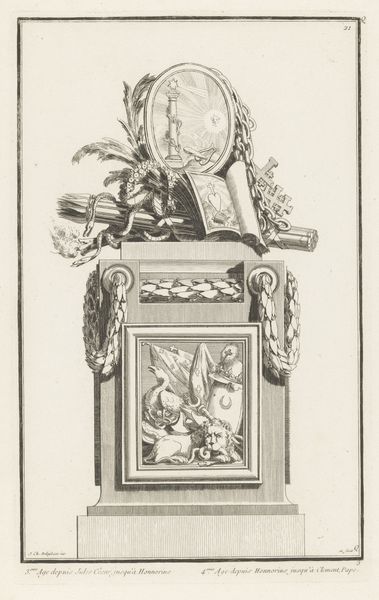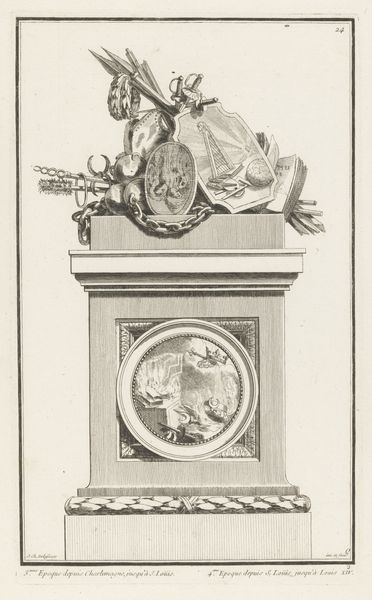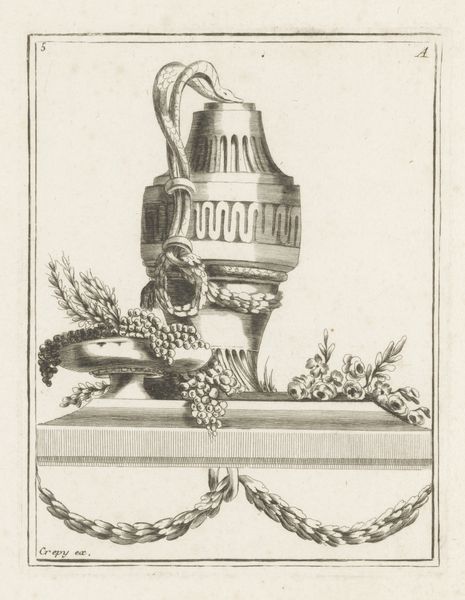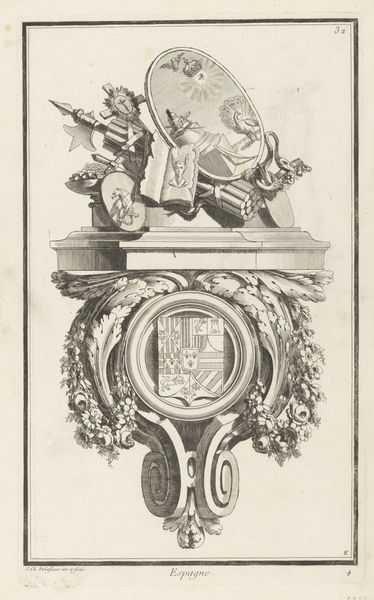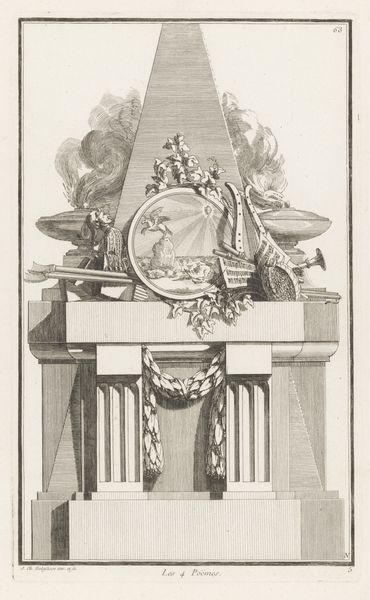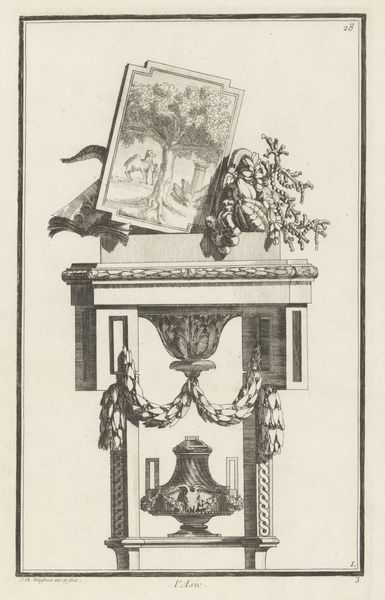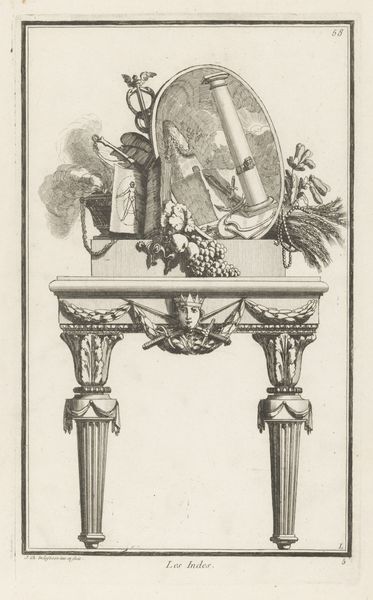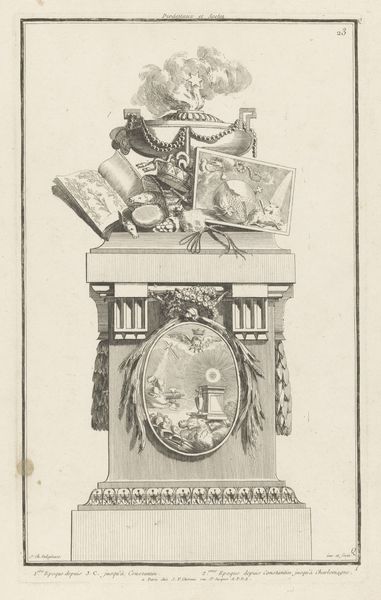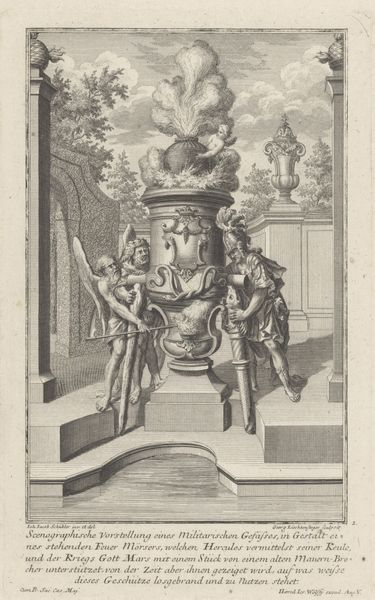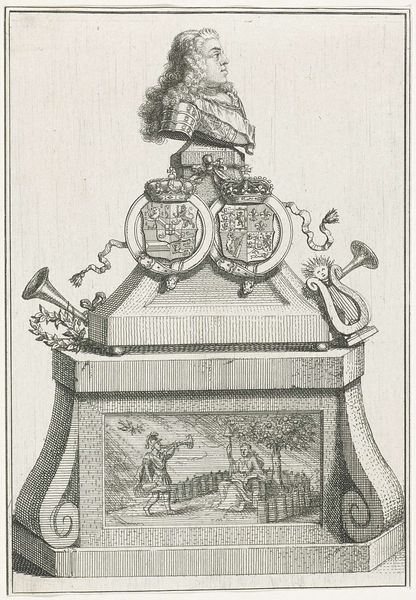
Dimensions: height 379 mm, width 235 mm
Copyright: Rijks Museum: Open Domain
Editor: This is "Rome" by Jean Charles Delafosse, an engraving from around 1768-1771. It feels incredibly symbolic, with so many different elements piled together on top of what looks like a pedestal. How do you interpret this work? Curator: I see a carefully constructed allegory of power and continuity. Consider the objects – weapons, shields, laurel wreaths – they aren't merely decorative. They are potent symbols, recalling the martial strength and civic virtue of Rome’s historical past and asserting cultural inheritance. Do you notice how these are deliberately arranged? Editor: Yes, they seem very deliberately placed. The weapons pointing outward give it a somewhat aggressive feel. Curator: Precisely! And above, a Christian symbol – the Chi-Rho. It speaks volumes about the evolving identity of Rome. It is both a declaration of faith and perhaps also an assertion of dominance and divine favor. This visual vocabulary creates a layered narrative; historical, religious, and political. Editor: So, it's not just about Rome's past glory, but also its present power and future aspirations? Curator: Exactly! The artist utilizes established iconography to convey messages about authority and legacy. What do you think the snake wrapped around the eagle could represent? Editor: Hmmm… Perhaps wisdom overcoming instinct? Or maybe vigilance? I'm not entirely sure, honestly! Curator: These layers invite the viewer to participate in decoding the image, actively engaging with the symbolic language embedded within. Each object carries historical weight. Editor: This has really opened my eyes to the layers of meaning that can be embedded within what seems like a purely decorative piece. Curator: And, hopefully, you now recognize the enduring power of symbols in shaping our understanding of culture and history.
Comments
No comments
Be the first to comment and join the conversation on the ultimate creative platform.

